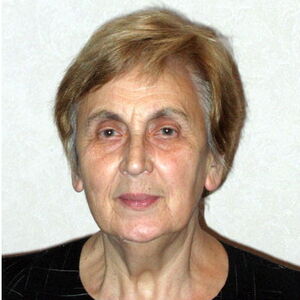Диссертация (1140002), страница 27
Текст из файла (страница 27)
– P. 2769 – 2778.90. Berg W.A., Campassi C., Langenberg P.et al. Breast imaging reporting anddatasystem: inter- and intraobserver variability analysis functions, and a finalassessment. // Am J Roentgenol. – 2000. – Vol. 174. – P. 1769 – 1777.91. Bernardi D, Caumo F, Macaskill P. et al. Effect of integrating 3D‐mammography(digital breast tomosynthesis) with 2D‐mammography on radiologists’ true‐positive andfalse‐positive detection in a population breast screening trial.
Europ J of Cancer. –2014.– Vol. 50.– № 7. – Р.1232 ‐– 1238.92. Birdwell B., Ikeda D., Jeffrey S. Preliminary experience with Power Dopplerimaging of solid breast masses. // Am J Roentgenol. – 2003. – Vol. 169. – P. 703 – 707.93. Blamey R.
W., Ellis I. O., Pinder S. E. et al. Survival of invasive breast canceraccording to the Nottingham Prognostic Index in cases diagnosed in 1990–1999. // EurJ Cancer. – 2007. – Vol. 43. – № 10. – p. 1548 – 1555.94. Boyd N.F., Byng J.W., Jong R.A., Fishell E.K., et al. Quanti-tative classification ofmammographic densities and breast cancer risk: results from the Canadian NationalBreast Screening Study. // J. Natl.
Cancer Inst. –1995. – № 87. – P. 670 – 675.95. Boyer B., Russ E. Anatomical-radiological correlations: Architectural distortions.//Diagnostic and Interventional Imaging. – 2014. – Vol. 95. – P. 134 –140.96. Brem R., Tabár L., Duffy S., Inciardi M, Guingrich J. et al. Assessing improvementin detection of breast cancer with three-dimensional automated breast US in womenwith dense breast tissue: the SomoInsight Study.
Radiology. 2015; 274(3):663-673.97. Burbank F. Breast interventional devices: how they evolve and define newsubspecialities.SymposiumMammographicum2006.–http:breast-cancer-research.com.(дата обращения 15.09.2015)98. Burnside E.S., Sommer A.M. Differentiating Benign from Malignant Solid BreastMasses with US Straing Imaging. // Radiology. – 2007. – № 245. – P. 401 – 411.17399. Butt Z., Haider S.F., Arif S.
Breast cancer risk factors: a comparison between premenopausal and post-menopausal women// J. Pak Med Assoc. – 2012. –; № 62(2). – Р.120–124.100. Carmen J. Allegra, Denise R. Aberle, Pamela Ganschow. National Institutes ofHealth State-of-the-Science Conference Statement: Diagnosis and Management ofDISC. // J Natl Cancer Inst. – 2010. – Vol. 102 (3). – P. 161 – 169.101. Ciatto S., Houssami N., Bernardi D., Caumo F., Pellegrini M et al. Integration of3D digital mammography with tomosynthesis for population breast-cancer screening(STORM): a prospective comparison study// Lancet Oncol.
– 2013. – Vol. 14. – №7. –Р. 583 – 589.102.Chang H. R., Cole B., Bland K. I. Nonpalpable breast cancer in women aged 40 -49 years: a surgeon' s view of benefits from screening mammography. // J. Natl. CancerInst. Monogr. – 1997. – Vol. 22. – P. 145 – 149.103. Cheng L., Li X. Breast Imaging Reporting and DataSystem (BI-RADS): Breastmass. Gland Surgery J. – 2012. – Vol.1. – №1. – Р. 62 –74.104. Collaborative Group on Hormonal Factors in Breast Cancer.
Menarche,menopause, and breast cancer risk: individual participant meta-analysis, including 118964 women with breast cancer from 117 epidemiological studies.// Lancet Oncol. –2012. – Vol. 13. – №11. – Р.1141-1145.105. Collaborative Group on Hormonal Factors in Breast Cancer. Familial breastcancer: collaborative reanalysis of individual data from 52 epidemiological studiesincluding 58,209 women with breast cancer and 101,986 women without the disease.
//Lancet. – 2001. – Vol. 358. – № 9291. – P. 1389 – 1399.106. D'Orsi CJ, Sickles EA, Mendelson EB, Morris EA et al. ACR BI-RADS, Atlas.Breast Imaging Reporting and Data System, Reston VA, ACR; 2013. P. 732www.ashevilleradiology. com/physicians/ACR_BIRADS_ATLAS.107. Dixon A.K., Wheeler Т.K., Lomas D.J. et al. CТ or MRI for axillary symptomsfollowing treatment breast carcinoma? A randomized trial. // J Clin Radiology. – 1993.– Vol. 48.
– P. 371 – 376.174108. Epstein S.S., Bertell R., Seaman B. Danger and unreliability of mammogrraphy:breast examination is a safe, effective. // Int. J. Health Serv. – 2001. – Vol. 31. – № 3.– P. 605 – 615.109. EvansA. The diagnosis and management of pre-invasive breast disease:Radiological diagnosis Nottingham International Breast Education Centre, Nottingham,UK // Breast Cancer Res. – 2003. – Vol.
5. – P. 250 – 253.110. Fajardo L. L. Stereotactic and sonographic large-core biopsy of nonpalpablebreast lesions: results of the Radiologic Diagnostic Oncology Group V study / L.L.Fajardo, E. D. Pisano, D. J. Caudry // Acad. Radiol. 2004. – Vol. 11. – N. 3. – P. 293–308.111. Ferlay J, Soerjomataram I, Ervik M, Dikshit R, Eser S. et al. GLOBOCAN 2012v1.1, Cancer Incidence and Mortality Worldwide: IARC Cancer Base No. 11; 2014.Available from:http://globocan.iarc.fr (дата обращения:16/01/2015).112. Fisher U. Practical MR Mammography.
// Thieme Stuttgart.: NY., 2004. – 211 p.113. Fortner R.T., Eliassen A.H., Spiegelman D. et al. Premenopausal endogenoussteroid hormones and breast cancer risk: results from the Nurses' Health Study II. //Breast Cancer Research. –2013 – 15 (эл.версия, 3672790.pdf, дата обращения15.01.2015).114. Frey H. Realtime elastography. A new ultrasound procedurefor the reconstructionof tissueelasticity.
// Radiologe. – 2003. – Vol. 43. – P. 850 – 855.115. Friedenreich C. M., Cust A. E. Physical activity and breast cancer risk: impact oftiming, type and dose of activity and population subgroup effects. // Br. J. Sports Med. –2008. – Vol. 42. – № 8. – P. 636 – 647.116. Giger М., Inciardi М., Edwards А. et al. Automated Breast Ultrasound in BreastCancer Screening of Women With Dense Breasts: Reader Study of MammographyNegative and Mammography-Positive Cancers// AJR.
2016. - 206:6, 1341-1350.117. Gordon P.B., Gagnon F.A., Lanzkowsky L. Solid breast masses diagnosed asfibroadenoma at fine-needle aspiration biopsy: acceptable rates of growth at longtermfollow-up. // Radiology. – 2003. – Vol. 229. – P. 233 – 238.175118. Graf O., Helbich T.H., Fuchsjaeger M.H., et al. Followup of palpablecircumscribed noncalcified solid breast masses at mammography and US: can biopsybe averted? // Radiology. – 2004. – Vol.
233. – P. 850 – 856.119. Gulsrud Th.O., Husoy H. Optimal filter-based detection of micro-calcifications. //IEEE Trans. Biomed. Eng. – 2001. – Vol. 48. – № 11. – P. 1272 – 1281.120. Gutwein LG, Ang DN, Liu H, et al. Utilization of minimally invasive breastbiopsy for the evaluation of suspicious breast lesions. Am J Surg. – 2011; 202:127.121. Harlow S.D. et al. Executive summary of the Stages of Reproductive AgingWorkshop + 10: addressing the unfinished agenda of staging reproductive aging //Menopause. 2012. Vol. 19.
– № 4. – P. 1–9.122. Harvey J.A., Nicholson B.T., Lo Russo A.P., Cohen M.A., Bovbjerg V.E. Shortterm follow-up of palpable breast lesions with benign imaging features: evaluation of375 lesions in 320 women. AJR. – 2009. – Vol. 193. – № 3. – Р. 1723–1730.123.Horn J., Åsvold B.O., Opdahl S., et al.
Reproductive factors and the risk ofbreast cancer in old age: a Norwegian cohort study. //Breast Cancer Res.Treat. - 2013. № 139(1).- Р. 237–43.124. Hoyt K., Parker K.J., Rubens D.J. Real-time shear velocity imaging usingsonoelastographic techniques. // US Med Biol. – 2007. – Vol. 33. – P. 1086 – 1097.125. Iqbal J, Ginsburg O, Rochon PA, et al: Differences in breast cancer stage atdiagnosis and cancer-specific survival by race and ethnicity in the UnitedStates. JAMA. – 2015. – Vol 313. – Р.
165-173.126. Itoh A., Ueno E., Tohno E., Kamma H., Takahashi H., Shiina T,et al. Breastdisease: clinical application of US elastography for diagnosis. // Radiology. – 2006. –Vol. 239. – P. 341 – 350.127. Jennifer A. Harvey, Brandi T. Nicholson Short-Term Follow-Up of PalpableBreast Lesions With Benign Imaging Features: Evaluation of 375 Lesions in 320Women. // AJR – 2009. – Vol. 193. – P.
1723 – 1730.176128. Kaaks R., Tikk K., Sookthai D., Schock H. et al. Premenopausal serum sexhormone levels in relation to breast cancer risk, overall and by hormone receptor status Results from the EPIC cohort. Int. J. Cancer. 2014. – Vol.134– №8. – Р.1947-1957129. Karamouzis M.V., Likaki-Karatza E., Ravazoula P. Et al. Non-palpable breastcarcinomas: correlation of mammographically detected.
// Int. J. Cancer. – 2002. – Vol.102. – № 1. –P. 86 – 90.130. Kasahara Y., Kawai M., Tsuji I., Tohno E., Yokoe T., et al. Harms of screeningmammography for breast cancer in Japanese women. Breast Cancer. – 2012. – URL:http: www.ncbi.nlm.nih.gov/pubmed / 22282164.131.
Kerlikowske K. Screening mammography in women under 50 years. // CurrOPIN Obstet. Gynecol. – 2012. – Vol. 24. – № 1. – P. 38 – 43.132. Kim S.Y., Kim H.Y., Kim E.K., et al. Evaluation of malignancy risk stratificationof microcalcifications detected on mammography: a study based on the 5th edition ofBI-RADS.// Ann Surg Oncol. – 2015. – Vol.22. – №9. – Р. 2895-2901.133. Kulie T., Slattengren A., Redmer J., Counts H., Eglash A., Schrager S. Obesityand women's health: an evidence-based review.
// J. Am. Board Fam. Med. – 2011. – №24. – P. 75 – 85.134. Kerlikowske K, Smith-Bindman R, Abraham LA, et al. Breast cancer yield forscreening mammographic examinations with recommendation for short-interval followup. // Radiology. – 2005. – Vol. 234. – P. 684 – 692.135. Kerlikowske K., Zhu W., Tosteson A. et al. Identifying Women With DenseBreasts at High Risk for Interval Cancer: A Cohort Study. Annals of Internal Medicine2015;162:673–681. doi: 10.7326/M14-1465136.
















